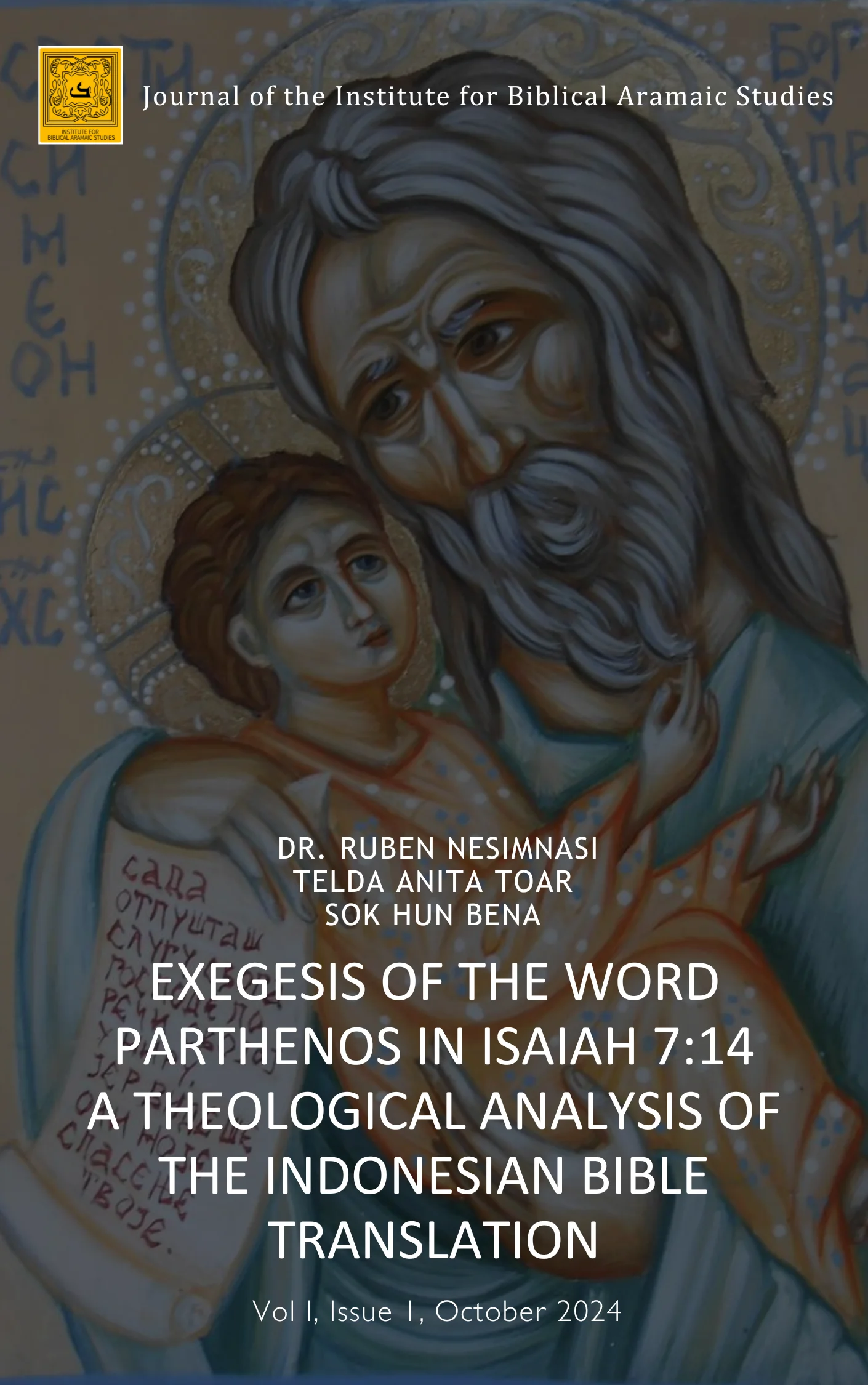Exegesis of the word parthenos in Isaiah 7:14 a theological analysis of the Indonesian bible translation
Journal of the Institute for Biblical Aramaic Studies Vol I, Issue 1, October 2024
DOI:
https://doi.org/10.6084/m9.figshare.28852589Keywords:
Septuagint, Indonesian Bible, Hebrew Bible, Exegesis, Isaiah, Parthenos, Virgin, Young Woman, Theological AnalysisAbstract
Abstract: This study analyzes the translation of the word parthenos in Isaiah 7:14, focusing on the differences between the Septuagint and the Indonesian Bible Society (LAI) translation. In the Septuagint, parthenos is translated as "virgin," which has influenced Christian understanding of the Virgin Birth, while the LAI translation uses the phrase "young woman," which is closer to the original Hebrew meaning of almah. These translation differences potentially lead to significant theological implications, particularly in the context of church teachings in Indonesia, where religious pluralism plays a significant role.
This research employs a qualitative approach using exegetical and theological methods to understand the theological impact of these translation differences. The data used includes Isaiah 7:14 in its Hebrew, Septuagint, and LAI versions, as well as relevant theological literature. A comparison of translations was conducted to identify differences in meaning, followed by a critical analysis of the theological and cultural implications.
The results show that the more neutral LAI translation can lead congregations to a more historical-contextual interpretation, although it may weaken the connection to the traditional doctrine of the Virgin Birth. This study opens further discussion on the impact of Bible translations on the development of local theology in Indonesia and encourages churches to be more critical in t eaching doctrines based on translated texts.
Downloads

Downloads
Published
Issue
Section
License
Copyright (c) 2024 Journal of the Institute for Biblical Aramaic Studies

This work is licensed under a Creative Commons Attribution 4.0 International License.
License Terms
The work published in this journal is licensed under the Creative Commons Attribution 4.0 International License (CC BY 4.0). This means that:
-
Attribution: You are free to share, copy, and redistribute the material in any medium or format, and to adapt, remix, transform, and build upon the material for any purpose, even commercially, as long as you give appropriate credit to the original author(s), provide a link to the license, and indicate if changes were made.
-
Non-Exclusivity: The author retains the right to use the work in other publications, presentations, or personal use, provided proper attribution is given.
-
No Additional Restrictions: You may not apply legal terms or technological measures that legally restrict others from doing anything the license permits.
-
Licensor: The original author(s) of the work are the licensor(s), who grant you the rights outlined in this license.
-
License Link: For more information on the terms of this license, please visit Creative Commons.





